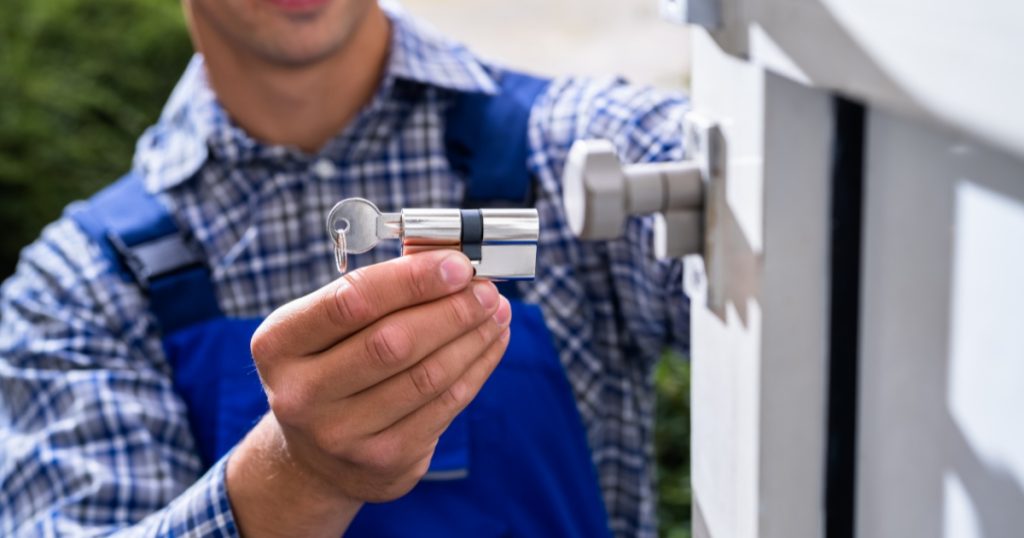Have you ever been locked out of your home, car, or office? If so, you know how frustrating and inconvenient it can be.
Often, people resort to forceful methods, which can result in damage to the door or lock. However, there are numerous ways to unlock doors without causing harm to them.
In this comprehensive guide, we will discuss various methods for unlocking doors without damaging them, as well as the tools and techniques you’ll need to master.
Please note that this information is for educational purposes only, and you should only use these methods to gain access to your own property. Using these methods unlawfully may result in criminal charges.
Assessing the Situation
Before attempting to unlock a door without damaging it, it’s important to assess the situation carefully. This includes identifying the type of lock and evaluating your skill level.
Identifying the Type of Lock
There are numerous types of locks, including pin tumbler locks, deadbolts, lever locks, and more. Each lock requires a specific approach, so it’s essential to determine the lock type before attempting any unlocking methods.
Assessing Your Skill Level
If you’re new to lock-picking or non-destructive entry, you may want to start with basic techniques and tools. However, if you have experience or feel confident in your abilities, you can explore more advanced methods.
Unlocking Doors with Basic Techniques
In this section, we’ll discuss some basic techniques for unlocking doors without damaging them. These methods are suitable for beginners and can be used on a variety of common locks.
Credit Card Technique
The credit card technique is a simple, non-destructive method for unlocking doors with spring-loaded latch locks. This method works best on doors that don’t have a deadbolt.
- Choose a flexible card, such as a credit card or ID card.
- Insert the card between the door and the door frame, directly above the latch.
- Apply gentle pressure to the card while wiggling it back and forth.
- As the card slides over the latch, push the door open.
Please note that this technique may damage the card, so avoid using valuable cards for this purpose.
Bump Key Method
A bump key is a specially modified key designed to open pin tumbler locks by applying force to the pins. To use a bump key, follow these steps:
- Insert the bump key into the lock.
- Apply gentle pressure to the key, turning it in the unlocking direction.
- Using a bump hammer or the heel of your hand, strike the end of the key sharply.
- Repeat the process until the lock turns and opens.
Picking the Lock
Lock picking is a popular method for unlocking doors without damaging them. It involves using a tension wrench to apply torque to the lock while manipulating the pins with a pick. To pick a lock, follow these steps:
- Insert the tension wrench into the bottom of the keyway and apply gentle pressure in the direction the lock turns.
- Insert a suitable pick (such as a hook or rake pick) into the top of the keyway.
- Manipulate the pins inside the lock using the pick, while maintaining pressure on the tension wrench.
- Once all the pins are set, the lock cylinder should turn, allowing you to open the door.
Please note that lock picking requires practice and patience. It may take some time to become proficient in this technique.
Unlocking More Advanced Locks
For those with experience in non-destructive entry or who are willing to invest time in learning new techniques, unlocking more advanced locks is possible. In this section, we’ll discuss methods for unlocking master key systems, lever locks, and tubular locks.
Master Key System
A master key system is a type of lock system in which one key (the master key) can open multiple locks, while other keys can only open specific locks. To unlock a master key system without damaging it, you’ll need to create a custom pick or key.
- Determine the lock type and pin arrangement.
- Acquire or create a pick or key designed to manipulate the pins in the master key system.
- Use the custom pick or key to unlock the door, as you would with a standard lock.
Lever Lock Picking
Lever locks are commonly found on doors in the UK and require a different approach to picking than pin tumbler locks. To pick a lever lock, you’ll need a set of lever lock picks and a tension tool.
- Insert the tension tool into the keyway and apply gentle pressure to the bolt.
- Select a suitable lever lock pick and insert it into the keyway.
- Manipulate the levers within the lock using the pick, while maintaining pressure on the tension tool.
- Once all the levers are lifted, the bolt should retract, allowing you to open the door.
Tubular Lock Picking
Tubular locks are often used on vending machines, bike locks, and safes. To pick a tubular lock, you’ll need a tubular lock pick.
- Insert the tubular lock pick into the lock.
- Apply gentle pressure to the pick while turning it in the unlocking direction.
- Manipulate the pins inside the lock using the pick, adjusting each pin individually.
- Once all the pins are set, the lock should turn, allowing you to open the door.
Non-Destructive Entry Tools and Techniques
In addition to the methods discussed above, there are numerous tools and techniques available to unlock doors without damaging them. In this section, we’ll explore lock picking tools, air wedges, and bypass tools.
Lock Picking Tools
A variety of lock picking tools are available for purchase, including picks, tension wrenches, bump keys, and more. These tools can help you unlock doors without causing damage when used correctly.
Air Wedges
Air wedges are inflatable devices that can be used to create a gap between the door and the door frame. Once the gap is created, you can use a reach tool or long, flexible rod to manipulate the lock from the inside.
- Insert the deflated air wedge between the door and the door frame.
- Inflate the air wedge until a gap is created.
- Use a reach tool or long, flexible rod to manipulate the lock from the inside.
Bypass Tools
Bypass tools are designed to circumvent a lock’s mechanism rather than picking it. These tools can be used to unlock doors without causing damage when used properly. Some common bypass tools include:
- Padlock shims: Thin pieces of metal used to unlock padlocks by disengaging the locking mechanism.
- Latch slip tools: Thin, flexible tools used to slip between the door and the door frame to disengage the latch.
- Under-the-door tools: Long, flexible rods with a wire loop at the end, designed to reach under a door and pull down on the door handle from the inside.
Please note that bypass tools should be used carefully and responsibly. Unauthorized use of these tools can result in criminal charges.
When to Call a Professional Locksmith
While the methods and tools discussed in this article can help you unlock doors without damaging them, there are situations when calling a professional locksmith is the best course of action.
These may include:
Time Constraints
If you’re in a hurry or don’t have the time to learn and practice lock-picking techniques, calling a professional emergency locksmith may be the quickest and most efficient option.
Complex Lock Systems
Some lock systems, such as high-security locks or electronic locks, may be too complex for an inexperienced individual to tackle. In these cases, calling a local locksmith with experience in these systems is recommended.
Legal Concerns
If you’re attempting to unlock a door that you don’t have the legal right to access, calling a locksmith is not advised. Unauthorized entry can result in criminal charges. Always ensure that you have the legal right to access the property before attempting any unlocking methods.
Conclusion
Unlocking doors without damaging them is a skill that can save you time, money, and frustration. By learning and practicing various non-destructive entry techniques, such as lock picking, bump key methods, and using air wedges, you can gain access to your property without causing harm to the door or lock.
Remember, it’s important to assess the situation and the type of lock before attempting any unlocking methods. If you’re inexperienced or unsure of your abilities, consider starting with basic techniques and tools. If you have experience or are willing to invest time in learning new techniques, you can explore more advanced methods for unlocking doors.
However, if you’re facing time constraints, dealing with complex lock systems, or have legal concerns, it’s best to call a professional locksmith for assistance. Always use the information provided in this article responsibly and only for accessing your own property.

